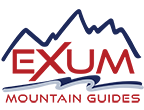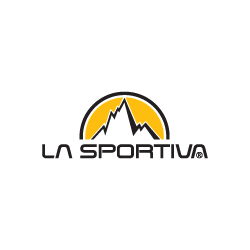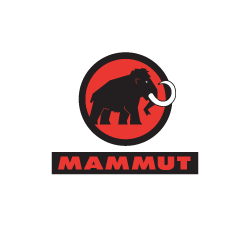A climb of the Grand involves movement over varied terrain in a wide range of temperatures. Hiking near the valley floor can be warm and sunny, while starting your summit bid in the pre-dawn darkness of the Lower Saddle can be cold and windy. You must eat enough to fuel your climb. The time to think healthy was during your training – now it is time to think only about what you will want to eat when you are climbing. Bring only food you really like. Clothing worn while hiking lower in the valley can be cotton; however, clothing worn at higher elevations must be synthetic or wool. Please consider the following list carefully. You will have opportunities during class to discuss these items with your guide.
Exum Senior Guide, Brenton Reagan, demonstrates the proper way to pack and prep for your Grand Teton Climb.
The weather in the Tetons is extremely variable. Inclement weather, including rain or snow, is possible even in the middle of the summer, so it is critical that you are prepared for all weather conditions. The success and enjoyment of your climb may depend on it.
The following equipment list is specific to the Grand Teton and serves as a starting point for climbs of other peaks as well. Please call if you have questions.
For a printable PDF of this equipment list, click here.
Clothing Items
(Outer layers must fit over the inner layers. Depending on conditions, you may not need to wear all layers at all times, but you must have them with you. Except for a T-shirt and shorts, please, NO cotton)
- Long underwear bottoms/base layer
- Synthetic, fleece or wool.
- Long pants
- Synthetic or wool.
- Hiking or climbing pants or loose-fitting running pants.
- Rain pants
- Long underwear top/base layer
- Synthetic, fleece or wool.
- Must be long-sleeved.
- Insulating layer: Sweater, pullover, or jacket
- Synthetic, fleece or wool.
- Insulated jacket
- Synthetic or down.
- Not too bulky.
- Rain jacket with a hood
- Must be waterproof.
- A jacket equivalent to the Arc’teryx Alpha FL jacket is ideal – lightweight, breathable, and waterproof.
- RECOMMENDED: Extra vest, jacket, or upper layer of clothing
- Synthetic, fleece or wool.
- Highly recommended if you tend to get cold easily.
- OPTIONAL: T-Shirt and/or Shorts
- For the hike to the hut/base camp.
- Cotton is okay for this part of the trip ONLY.
- Many people like to wear a long sleeved “sun hoody” for extra sun protection.
For Your Feet, Hands and Head
- Approach Shoes*
- Approach Shoes are light hiking shoes with climbing shoe “sticky rubber” on the soles. In good conditions you will wear these for the entirety of your climb with us. This includes the training day(s), the hike up to our high camp, and on the climb itself.
- Not all “approach shoes” are created equal. We rent high quality approach shoes at our office. However, if you wish to buy your own, please call the office before you buy just to make sure that the rubber is sticky enough for the climb of the Grand Teton.
- OPTIONAL: Hiking boots – can be worn up to, but not above our hut.
- You may hike in your own shoes or boots up to the hut if you have any special support or fit needs. Most climbers are comfortable in the approach shoes.
- If you choose to hike in your own shoes, you must carry your approach shoes with you. This adds extra weight and takes up space, so plan accordingly.
- Two pairs of socks (at least one pair should be warm)
- Wool or synthetic.
- Well-fitting to protect against blisters.
- Please wear a clean pair of socks inside our sleeping bags.
- One pair of gloves
- Wool, fleece, insulated leather or ski gloves. Gloves must be durable enough to climb in, but must also be dextrous enough to be able to open and close a carabiner while wearing them.
- Rappel gloves
- 100% cotton or leather – NO polyester.
- Warm hat
- Wool, synthetic, or ski hat. Make sure this will fit under your helmet.
Other Essential Items
- Backpack
- To hold all the clothing, food, and other items listed here, plus helmet and harness.
- Capacity of 35-40 liters for the Grand Teton.
- Capacity of 45-55 liters for all other two- or three-day climbs.
- Two water bottles
- 1-liter each. NOTE: No single-use plastic bottles, please.
- OPTIONAL: a camelback in place of one of the water bottles.
- Method of water purification
- Tablets, SteriPen, iodine, or filter.
- A small, lightweight option that purifies water quickly is ideal.
- Cup or mug
- For hot drinks with dinner, breakfast, and perhaps after the summit attempt.
- Bowl and utensil(s)
- As appropriate for the food you bring for dinner and breakfast.
- Sunglasses
- Sunscreen
- SPF lip balm
- Sun hat or baseball cap
- Headlamp
Other Recommended Items
- RECOMMENDED: Hiking/trekking poles
- Helpful for extra stability and joint/knee support on the hike up to and down from our hut.
- RECOMMENDED: Large plastic trash bag
- To line the inside of your backpack and keep your gear dry in the event of rainstorms.
- RECOMMENDED: Ear plugs
- The lower saddle is sometimes noisy or windy at night.
- OPTIONAL: Sleeping bag liner
- To put inside the sleeping bag at the hut.
- OPTIONAL: Custom orthotics
- To be used with approach shoes.
Food/Drink Items
- Day 1 – Lunch and Snacks (for the hike up to the hut; must require no preparation)
- Hand-held food such as sandwiches, bagels, cold pizza or fried chicken, tortillas, etc.
- Sausage, cheese, granola, gorp, jerky, nuts, energy bars, candy, etc.
- Day 1 – Dinner (hot water available, but no cooking is possible at our hut)
- Only bring food that can be prepared by immersing in boiling water or adding boiling water to it.
- Instant soups, ramen, frozen burritos, prepared food in pouches or trays (i.e. Tasty Bite), etc.
- Available at Dornan’s in Moose, Albertson’s, Smith’s, and Whole Foods in Jackson, as well as other locations.
- We do not recommend dehydrated (aka: freeze-dried) meals, as they can make it hard to stay hydrated and can upset the stomach, unless you use them regularly.
- Hot drinks, such as instant coffee, tea, hot chocolate, apple cider, or electrolytes.
- Day 2 – Breakfast (hot water available)
- Instant oatmeal or other hot cereals, muffins, Pop-Tarts, etc.
- You’ll be eating around 3:30 AM, so bring food you can stomach. It won’t taste better at altitude. If you wouldn’t enjoy eating it at home, don’t bring it.
- Hot drinks, such as instant coffee, tea, hot chocolate, apple cider, or electrolytes. For coffee drinkers, we recommend instant coffee. If you bring ground coffee, you will have to carry the wet grounds back to your car.
- Day 2 (Summit Day!) – Lunch and Snacks (must require no preparation and provide energy for your summit attempt and the hike down)
- Hand-held food such as sandwiches, bagels, cold pizza or fried chicken, tortillas, etc.
- Sausage, cheese, granola, gorp, jerky, nuts, energy bars, candy, etc.
- Be sure to bring enough snacks for Day 2 to tide you over if you end up getting back to the valley near or after dinner (not common, but it can happen).
- To repeat for emphasis: bring food that’s easy to eat and high in energy.
Be careful not to bring anything that will spoil in hot weather.
Addition Items for Early and Late Season
- (June to July 10, and September)
- One pair of ski gloves
- For a total of three pairs of gloves: two pairs of warm gloves plus a pair of rappel gloves.
- Gaiters
- To keep snow out of your boots, especially in early season.
- Extra layer(s) of clothing
- Extra hot drink mixes and snacks
- Colder temperatures require more energy sources.
Condition Dependent Items
- primarily for early season climbs:
- Crampon-compatible mountaineering boots*
- Crampons**
- Ice axe**
*Approach shoes, climbing shoes, and mountaineering boots are readily available for rent from Exum or local mountaineering stores such as Teton Mountaineering or Skinny Skis.
**Helmet, harness, crampons, and ice axe will be provided by Exum as needed.
Items you do NOT need for the Grand Teton
- Tent: We have a Weatherport shelter (we call it our “hut”) at the Lower Saddle, elevation 11,600 feet, that you will sleep in. You do not need to bring a tent.
- Sleeping bag and sleeping pads: We have sleeping bags and pads at our hut at the Lower Saddle, so you don’t need to bring or carry them for your climb up the Grand Teton.
- Camping Stove and Fuel: We have a multi-burner stove at the hut that the guides will use to boil hot water for you and other clients. You do not need to bring a camping stove or fuel or pots and pans.
Mt Moran Climbs
- You will need an additional day’s worth of food.
- Exum can provide a tent, stove, sleeping bag and sleeping pad but you are encouraged to use your own gear if the guide approves it.
Other Multi-Day Climbs
- The appropriate list of equipment will vary depending on number of days, location and facilities. Please consult with your guide or the Exum Office for specific objectives.
Reminder
- You must bring ALL items listed for the activities you have planned, with the exception of recommended/optional items. Please call us at 307-733-2297 if you have any questions.











